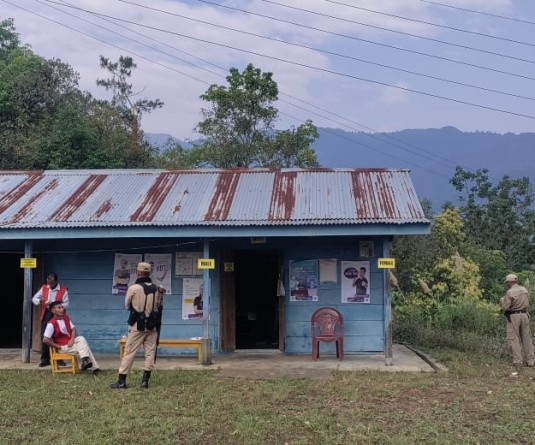
A young victim is helped in the center of Oslo, Friday July 22, following an explosion that tore open several buildings including the prime minister’s office, shattering windows and covering the street with documents. (AP Photo)
Oslo, July 23 (IANS): Shell-shocked Norwegian authorities Saturday searched for more victims after a rightwing Christian massacred 84 people on an island, soon after carrying out a deadly bombing in the capital that killed seven people. A numbed Prime Minister Jens Stoltenberg called the bloodbath “a nightmare”. As country after country reached out to Norway with messages of condolences and solidarity, police arrested and charged a 32-year-old man, Anders Behring Breivik, with both the atrocities perpetrated Friday.
The Norwegian media identified Breivik as “an ethnic Norwegian” and a member of a right extremist group in the country’s east and added he had a record of earlier arrest. “Never since the Second World War has our country been hit by a crime on this scale,” Prime Minister Stoltenberg said in Oslo. He said the killings resembled a “nightmare” and were a tragedy for the country of 4.6 million.
The authorities asked Norwegians and others to avoid Oslo’s centre, where a devastating car bomb Friday ripped apart government offices, including those of Stoltenberg, leaving seven dead and about 90 injured. The dead included civil servants, some known to Stoltenberg. That attack was initially linked to Al Qaeda and affiliated groups by terrorism experts. Even before Oslo could digest the enormity of the crime came news of the massacre on the island of Utoeya, 40 km away. That immediately changed everyone’s assessment.
According to police accounts, soon after the Oslo attack, Breivik travelled to the wooded island where the ruling Labour Party was holding a youth camp, attended by some 600 people. Many of them were aged between 14 and 18 years. According to The Economic Voice, they were there to take part in debates and listen to speeches on a variety of issues, including Norway’s educational system.
A Norwegian journalist told BBC that the man came to the island on a ferry boat posing as a police officer, “saying he was there to do research in connection with the (Oslo) bomb blasts”. “He asked people to gather round and then he started shooting, so these young people fled into the bushes and woods. Some even swam off the island to get to safety,” journalist Ole Torp was quoted as saying.
The Norwegian media identified Breivik as “an ethnic Norwegian” and a member of a right extremist group in the country’s east and added he had a record of earlier arrest. “Never since the Second World War has our country been hit by a crime on this scale,” Prime Minister Stoltenberg said in Oslo. He said the killings resembled a “nightmare” and were a tragedy for the country of 4.6 million.
The authorities asked Norwegians and others to avoid Oslo’s centre, where a devastating car bomb Friday ripped apart government offices, including those of Stoltenberg, leaving seven dead and about 90 injured. The dead included civil servants, some known to Stoltenberg. That attack was initially linked to Al Qaeda and affiliated groups by terrorism experts. Even before Oslo could digest the enormity of the crime came news of the massacre on the island of Utoeya, 40 km away. That immediately changed everyone’s assessment.
According to police accounts, soon after the Oslo attack, Breivik travelled to the wooded island where the ruling Labour Party was holding a youth camp, attended by some 600 people. Many of them were aged between 14 and 18 years. According to The Economic Voice, they were there to take part in debates and listen to speeches on a variety of issues, including Norway’s educational system.
A Norwegian journalist told BBC that the man came to the island on a ferry boat posing as a police officer, “saying he was there to do research in connection with the (Oslo) bomb blasts”. “He asked people to gather round and then he started shooting, so these young people fled into the bushes and woods. Some even swam off the island to get to safety,” journalist Ole Torp was quoted as saying.




